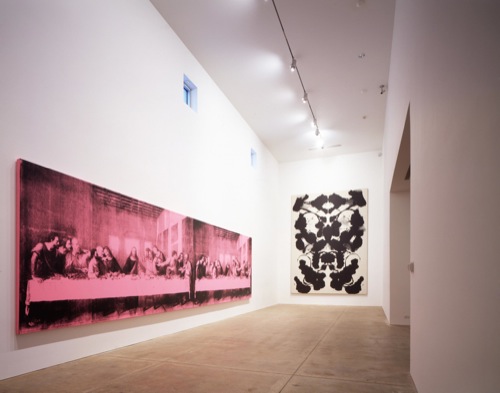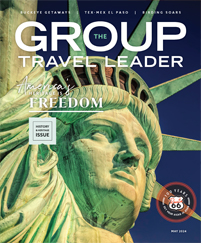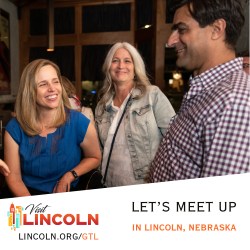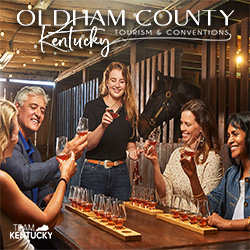
Courtesy Andy Warhol Museum
There are many ways to trace a country’s history. Museums deal with political and governmental history, military history, urban history, rural and agricultural history and transportation history with powerful artifacts from the Declaration of Independence to Air Force Ones, used to transport U.S. presidents.
However, a country’s history is also defined by the everyday lives of its people and the cultural influences on those lives. Moving through the rooms of Geppi’s Entertainment Museum in Baltimore, you encounter Buster Brown, Mickey Mouse, the Lone Ranger, Superman, Howdy Doody, Barbie, and G.I. Joe on everything from lunch boxes to Pez candy dispensers.
“These are some of the characters who made a tremendous impact on our childhood while shaping our collective experiences,” said museum founder Steve Geppi. “You see the history of our country and the changing society reflected in those characters.”
Several museums showcase America’s popular culture, especially in the 20th century, with looks at comics, toys, advertisements, movies, radio, television, fashion, art, sports and many other things that influence that culture.
Andy Warhol Museum
Pittsburgh
During an eclectic 40-year career, Andy Warhol erased traditional distinctions between art and popular culture. His wide-ranging body of work is on display over seven floors of the Andy Warhol Museum in his native Pittsburgh.
Opened in 1994 in a former distribution center for products for mills and mines, the museum features more than 1,000 published prints, 900 paintings and nearly 100 sculptures, as well as drawings, films and videos, in addition to an archive of Warhol’s ephemera, source material and documents.
The collection covers the entire range of Warhol’s work, from his student work in the 1940s to his abstract pieces of the 1970s and 1980s. Included are his famous 1960s pop paintings of consumer products such as Campbell’s Soup cans and celebrities such as Elizabeth Taylor, Jackie Kennedy Onassis, Marilyn Monroe and Elvis Presley.
“We have exhibitions not only of Warhol, but also contemporary artists,” said Emily Meyer, assistant communications manager for the museum. “We try to stay connected to what is going on in the art world.”
Groups can arrange one-hour tours led by artist-educators who discuss specific works or themes customized to the groups’ interests.
The Andy Warhol Museum is one of the four Carnegie Museums of Pittsburgh.
— www.warhol.org —
The Museum at Bethel Woods
Bethel, N.Y.
The 1960s was a watershed decade in America, with the coming-of-age baby boomers fueling social, political, cultural and musical transformations. The decade culminated with the Woodstock Music and Art Fair in the summer of 1969.
The Museum at Bethel Woods, located at the site of the historic music festival, tells the story of the festival and of the decade it represented with films, interactive displays, text panels and artifacts.
Although the ’60s was often a turbulent decade, with the Cold War, the space race, civil rights, women’s rights, the Vietnam War and the draft, museum director Wade Lawrence said the displays and exhibits do not take a side.
“We try to keep it apolitical; we do not have a soapbox,” he said. “We are a history museum that looks at a watershed decade. We let visitors draw their own conclusions.”
The museum looks at the Woodstock festival, which drew an estimated half-million young people, from the perspective of the audience, the performers and its legacy, and balances the issue of its sex and drugs.
“We aren’t selling sex, drugs, and rock and roll,” said Lawrence. “We are selling history. The museum does mention it, but doesn’t glorify it or harp on it. We don’t soft sell, but we don’t gloss over too much either. It’s a good balance of reality and propriety.”
Lawrence said a moving 10-minute film produced by the History Channel takes a look at the year 1968. “It was quite a traumatic year,” he said. “You had the King [Martin Luther King Jr.] and Kennedy [Robert F. Kennedy] assassinations, the Tet offensive, the Democratic National Convention in Chicago — all those things. It was a horrible year; it’s amazing we survived it.
“But it ended on sort of an optimistic note with the first manned orbit of the moon. Grown men sob during the film. It’s difficult to watch with a dry eye.”
The museum is part of Bethel Woods Center for the Arts, which has several concert venues, including a 15,000-seat amphitheater overlooking the original Woodstock festival site..










